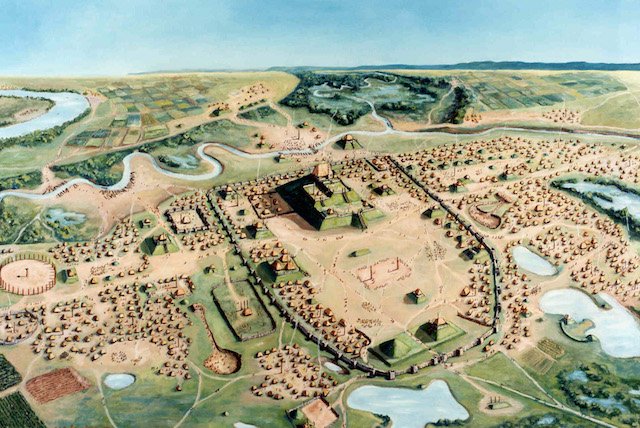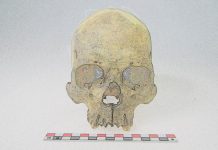
In a new study, researchers found climate change may have contributed to the decline of Cahokia.
Cahokia was a famous prehistoric city near present-day St. Louis.
The study shows a direct connection between changes in Cahokia’s population size as measured through a unique fecal record and environmental data of drought and flood.
The research was conducted by researchers from California State University, Long Beach, and the University of Wisconsin–Madison.
Previous studies from the team have shown that they could detect human poop in lake core sediments collected from Horseshoe Lake, which is not far from Cahokia’s famous mounds.
They tested fecal stanols, molecules produced in the human gut during digestion and eliminated in feces.
They found the more people who lived and defecated there, the more stanols evident in lake sediments.
In the current study, the team found that fecal stanol concentrations at Horseshoe Lake rise and fall similarly to Cahokia’s population.
Archaeological research has shown that by 1200, Cahokia’s population declined and the site was eventually abandoned.
There are several reasons for abandonment. The current study ties the archaeological and environmental evidence together.
The team examined the lake cores for evidence of flooding. They also looked for climate indicators that would show whether climate conditions were relatively wet or dry.
They found the lake core showed that summer precipitation decreased around the onset of Cahokia’s decline.
This may affect how people grow their staple crop and make the population decline.
The researchers suggest maybe that was why the city was finally abandoned.
The lead author of the study is AJ White, who completed the work as a graduate student at California State University, Long Beach.
The study was supported by the Geological Society of America and California State University, Long Beach.
The study is published in Proceedings of the National Academy of Sciences.
Copyright © 2019 Knowridge Science Report. All rights reserved.



